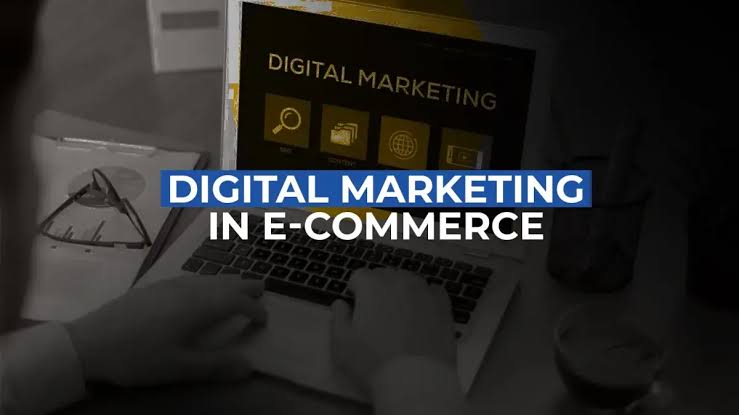By setting clear goals, choosing the right channels, and leveraging data-driven insights, e-commerce brands can build strong campaigns that not only attract new customers but also foster lasting loyalty. A well-executed campaign is an ongoing process that adapts to market changes while keeping the customer experience at its core.
E-commerce businesses thrive on visibility, customer engagement, and conversions. In today’s competitive online marketplace, digital marketing campaigns play a central role in reaching target audiences, building brand awareness, and driving sales. Creating an effective campaign involves a clear strategy, an understanding of customer behavior, and the right blend of tools and channels. Here is an in-depth guide on how to develop and execute successful digital marketing campaigns for e-commerce.
Understanding Your Target Audience
Before launching any campaign, it is crucial to identify and understand your target audience. This includes analyzing demographics such as age, gender, location, and income level, as well as psychographics like interests, shopping habits, and purchasing motivations. Using tools like Google Analytics, customer surveys, and social media insights can help you segment your audience effectively. A well-defined target market allows you to tailor messages that resonate deeply and drive engagement.
Setting Clear and Measurable Goals
An effective digital marketing campaign starts with specific and measurable goals. Instead of aiming to simply “increase sales,” it is better to define targets like “boost website traffic by 25% in three months” or “generate 500 leads through social media ads.” These measurable objectives make it easier to track performance and optimize campaigns. Goals should align with your overall e-commerce growth strategy and be realistic given your budget and resources.
Choosing the Right Digital Marketing Channels
E-commerce success often depends on selecting the most effective platforms to reach your audience. Popular channels include social media advertising, search engine marketing, email campaigns, influencer partnerships, and content marketing. Each channel has its strengths; for instance, Instagram and TikTok are ideal for visually appealing product promotions, while Google Ads target shoppers actively searching for products. Testing different channels can help you determine where your efforts yield the highest return.
Crafting Compelling Content and Creative Assets
Content is at the heart of any successful digital marketing campaign. This includes ad copy, product descriptions, blog posts, images, and videos. In e-commerce, high-quality visuals are particularly important, as customers often make buying decisions based on product images and videos. Your messaging should highlight unique selling points, create urgency when appropriate, and maintain brand consistency across all platforms. Engaging content increases click-through rates and fosters brand loyalty.
Leveraging Personalization and Automation
Personalization has become a powerful tool for boosting e-commerce conversions. Using customer data, you can tailor product recommendations, email offers, and targeted ads to individual preferences. Automation tools can help manage personalized email sequences, retarget customers who abandoned carts, and deliver timely promotions based on shopping behavior. Personalization makes customers feel valued and significantly increases the likelihood of repeat purchases.
Implementing Search Engine Optimization (SEO) Strategies
SEO is essential for increasing organic visibility and driving long-term traffic. Optimizing product pages with relevant keywords, improving website speed, and ensuring mobile-friendliness are key steps. Additionally, creating informative blog content that answers common customer questions can help establish authority and improve search rankings. The higher your store ranks in search results, the more likely you are to attract high-intent buyers without relying solely on paid advertising.
Using Paid Advertising Effectively
Paid advertising can accelerate campaign results when used strategically. Platforms like Google Ads, Facebook Ads, and TikTok Ads allow precise targeting based on interests, location, and online behavior. To maximize effectiveness, start with a modest budget, monitor ad performance closely, and refine targeting and creatives over time. A/B testing different ad variations helps identify which messages and visuals perform best.
Monitoring and Analyzing Campaign Performance
Tracking performance metrics is essential for determining a campaign’s success. Key performance indicators (KPIs) include click-through rates, conversion rates, cost per acquisition, and return on ad spend. Tools like Google Analytics, Facebook Ads Manager, and Shopify reports provide valuable insights into customer behavior and sales trends. Analyzing these metrics enables you to make data-driven adjustments, improve targeting, and increase campaign profitability.
Engaging with Customers Across Multiple Touchpoints
Successful e-commerce campaigns maintain ongoing engagement beyond initial promotions. This means interacting with customers through social media comments, follow-up emails, and loyalty programs. Providing excellent customer service, responding quickly to inquiries, and encouraging user-generated content help strengthen relationships. A strong brand community encourages repeat business and positive word-of-mouth marketing.
Adapting to Trends and Consumer Behavior Changes
The digital marketing landscape evolves quickly, and staying updated with emerging trends is essential. For example, short-form video content, live shopping streams, and AI-powered chatbots are gaining popularity in e-commerce. Being flexible and ready to incorporate new tools and formats can give your campaigns a competitive edge. Monitoring competitor strategies and analyzing industry developments ensures your approach remains fresh and effective.
In conclusion, creating effective digital marketing campaigns for e-commerce requires a blend of audience understanding, strategic planning, creative content, and continuous optimization.
